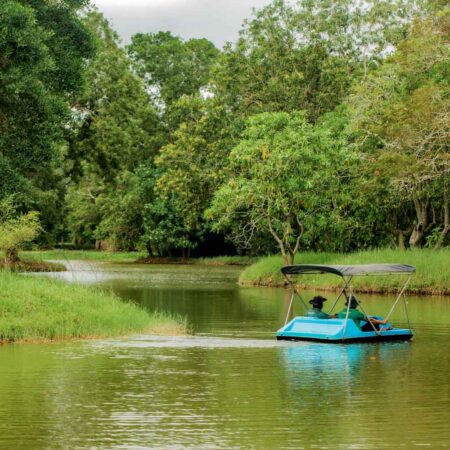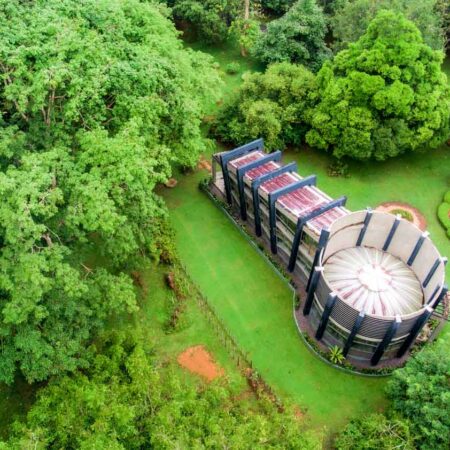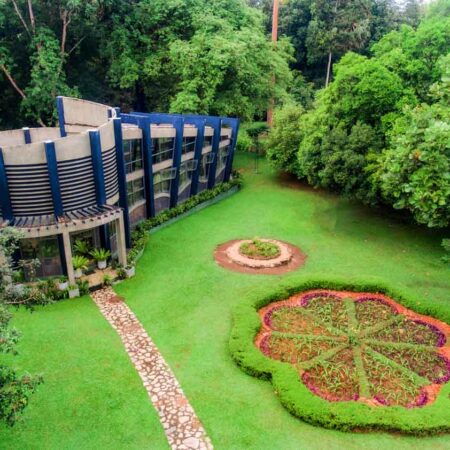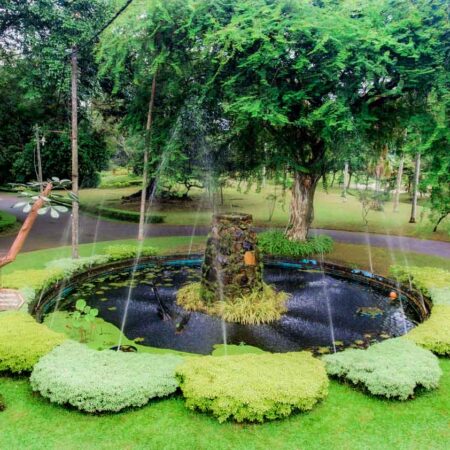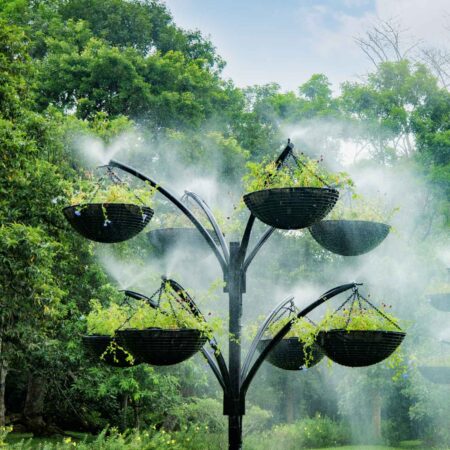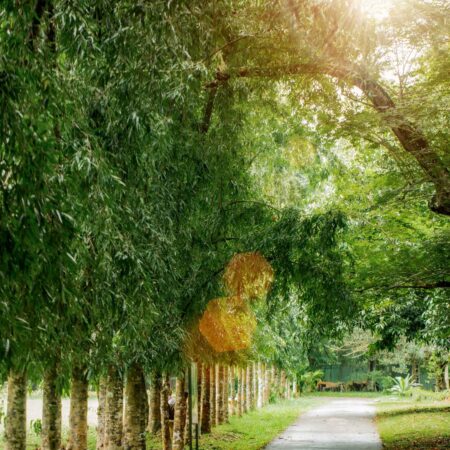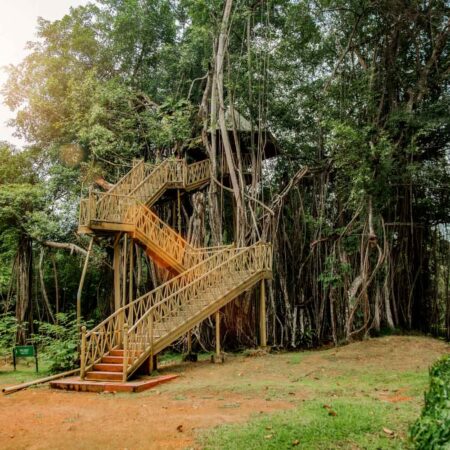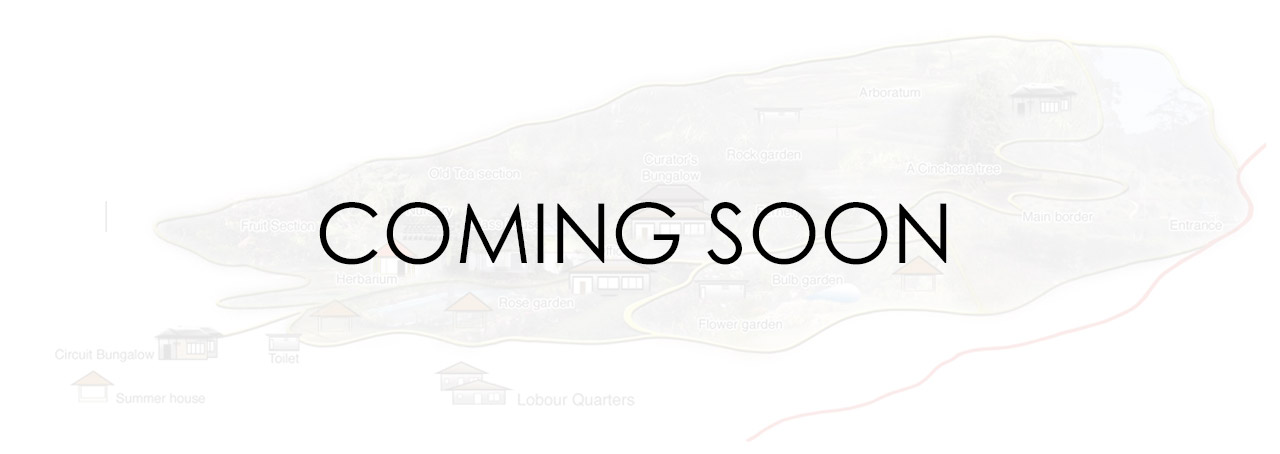
Henarathgoda Botanic Gardens
Henarathgoda Botanic Gardens,Gampaha was established in 1876 for the introduction of rubber to Sri Lanka and possess an array of botanical and horticultural attractions with a rich history. It is situated in Gampaha with a total extent of 17.4 ha. This garden consists of important plant collections of about 2000 species of Sri Lanka and other countries.
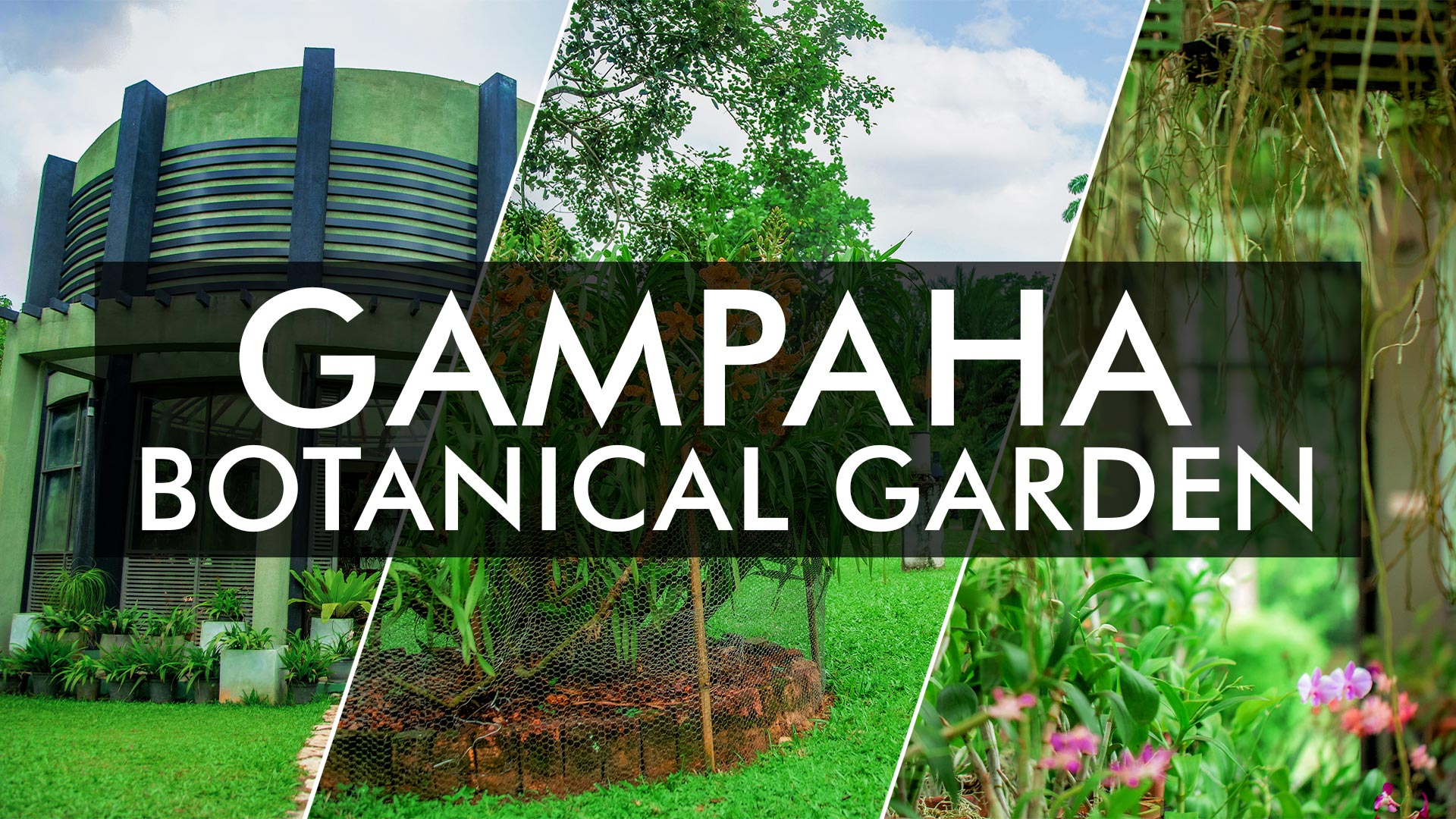
Placement of the garden
The garden is located about 450 meters from the Gampaha railway station on the Gampaha-Minuwangoda main road. The distance from Colombo to the garden is about 30 km. The garden is located at about 33 feet above sea level and has a tropical lowland climate. The garden covers a total area of 17.4 ha.
Henarathgoda Botanic Gardens, was established in 1876 for introduction of rubber to Sri Lanka and possess an array of botanical and horticultural attractions with a rich history.The old Henarathgoda Railway Station, which is still preserved as an archeological site of historical significance, can still be seen today.This station was created at that time to accommodate foreign scientists coming by train for rubber research. The British, who ruled Sri Lanka as a colony at that time, wanted to expand rubber cultivation in Sri Lanka as a source of income. The Director of the Peradeniya Botanic Gardens, Dr. GHK. Thwaitts has been very inquisitive about a suitable ground for it. Thwaitts decided that the Henarathgoda Botanic Gardens was the best place to start a rubber plant native to South America on a research level. In 1876, the land was cleared by the British for rubber cultivation. Later, in 1879, rubber seedlings brought from the Royal Botanic Gardens in Kew, were planted in this area.Rubber Plantation was handed over to The Muhandiram A de Zoysa who was the first caretaker of the garden. The rubber plants is said to have sprouted by 1881, and from the following year its seeds were taken across the island for planting, and to some of the British colonies. The first rubber plant planted in, Gampaha gardens died at an early age. The second rubber plant was destroyed in 1988. Because of that Hurricane. But even today the largest rubber plant in SriLanka still thrives in the Henarathgoda Botanic Gardens. Its height is 40 meters. The circumference is 5.7 m. Later the garden was developed as a major botanical garden on the island, the site is home to the remains of the first rubber plant planted as well as some 19th century plants. This garden consists of important plant collections of about 2000 plant species of Sri Lanka and other countries.
Locations
What you can see
visitors are advised to walk round the gardens if they wish to explore the many beautiful places in this very compact garden.
4.5 VISITORS RATING
Trusted By 1000+ Visitors
- MAIN BORDER AND MAIN DRIVE
- A well maintained mixed flower border adjoining a lawn is seen on the left hand side immediately inside the Main Entrance. A fine hedge formed of the Monterey cypress (Cupressus macrocarpa) of Califonia is seen opposition the flower border. Two giant specimens of silver-leaved New South wales turpentine tree (Syncarpia glomulifera) from Australia are seen planted beyond the cypress hedge. Several kinds of Azalea (Rhododendron indicum) and the common Camellia (Camellia japonica) are notable tall shrubs visible on the grassy slope behind the main border. Fine-leaved large shrubs of the bottle brush. (Callistemon lanceolatus) are seen scattered along the flower border.
- CENTRAL POND AND BULB GARDEN
- A foot path commences from the main drive leads to the central pond in which yellow water lilies are grown. Magnificent trees of Bunya Bunya Pine (Araucaria bidwilli), Eugenia cunninghamii and Mihiriya, a native tree of Sri Lanka, (Gordonia axillaris) are found planted around the central pond. The foot path on the left hand side leads to the bulb garden which was opened in 1924. It contains a collection of Lilium, Watsonia, Gladiolus, Agapanthus and Zephyranthes, many of them have been introduced from Holland and Japan.
- LOWER FLOWER GARDEN
- The flower garden displays many annual flowers adding beauty to the gardens, the flame bush, (Streptosolen jamesoni) Cestrum elegans, Poinsetia pulcherrima and many kinds of fuchcia their drooping clusters of pretty flowers are found along the herbaceous border. Interesting trees around the flower garden are the camphor tree. (Cinnamomum camphora) from China. The Queensland box tree, (Tristania conferata) from Australia, the Japanese silkworm Oak tree, (Quercus serrata) from Japan, the southern Magnolia, (Magnolia grandiflora) from Florida, Madanakama, a scented-flowered, medicinal plant, (Michelia fuscata) from china and the clump forming Senegal Data Palm, (Phoenix reclinata). Visitors should not miss the indigenous Rhododendron or Maharath Mal, (Rhododendron arboreum ssp zeylanicum) with scarlet bloom. A summer house constructed in 1910 as a memorial to Mr. J.K. Nock, a pioneer curator of the gardens, is seen below the flower garden.
- ROSE GARDEN
- The Botanic Gardens are locally reputed for their collection, the rose garden, established on a twin terraced piece of land, contains modern rose varieties imported from England and America. A herbaceous border is seen behind the rose garden.
- GLASS HOUSE
- A newly established glass house serving a repository for indoor plants stands along-side the exit drive. This displays blooming specimens of Begonias, Peperomias, Afican violet. Primula, Gloxinia, Streptocarpus, Pelargonium and specimens of many kinds of cacti and succulents.
- UPPER FLOWER GARDEN
- The upper flower garden also displays annual flowers and it includes a herbaceous and a mini rose collection.A Montezume pine (Pinus montezumae) from Mexico and Hoope pine (Araucaria cunninghamii) from New South Wales lie on either sides of the flower garden.A row of Jacaranda trees, (Jacaranda ovalifolia) with mauve flowers, is seen below. A giant Monterey cypress tree and Japanese cedar trees, (Cryptomeria japonica) grow around the flower garden. A dark green and deeply cut-leave creeper, the Dada Kehel (Rhaphidophora decursiva) is visible growing on a wanasapu tree, (Michelia nilagirica).
7.30 AM - 6.00 PM
Opening Hours
7.30 AM - 5.00 PM
Ticketing Hours
365 Days
Open
For Overseas Tourist
Entrance Fee
Come and explore the spectacular plant life of Sri Lanka
Foreign Child
(Elder than 12)
LKR3,000/=/ Ticket
- Great explorer of the truth, the master-builder.
Foreign Student
(Must have proof)
LKR2,000/=/ Ticket
- Great explorer of the truth, the master-builder.
Foreign Child
(5 to 12 Years)
LKR1,500/=/ Ticket
- Great explorer of the truth, the master-builder.
